 W
WEustahija Arsić was a Serbian writer and salonist. She was the first female member of Matica srpska and contributor to its periodical "Letopis." She also promoted the works of Serbian and Romanian writers, including Dositej Obradović, Joakim Vujić and Vuk Karadžić.
 W
WIlija Birčanin was a Serbian knez (Duke) who was killed during the Slaughter of the Dukes, the incident that sparked the First Serbian Uprising of the Serbian Revolution, ultimately leading to Serbia's liberation from the Ottoman Empire.
 W
WĐorđe Branković was a Transylvanian Serb diplomat, writer, and self-proclaimed descendant of the medieval Serbian Branković dynasty. He served as the agent representing the ruler of Transylvania at the Ottoman Porte. In 1680, he moved to Wallachia, whose ruler sent him as an emissary to the Habsburg Emperor Leopold I in 1688. That year, the emperor conferred the title of Imperial Count on Branković. After Habsburg troops captured parts of Serbia from the Ottoman Empire during the Great Turkish War, Branković attempted to restore the medieval Serbian state with him as its hereditary ruler. His venture failed in its inception, and Habsburg authorities arrested him in 1689. He lived on as a captive in Vienna and Cheb, though he was not held in a prison. He wrote the Slavo-Serbian Chronicles, which was influential in the development of early modern Serbian historiography.
 W
WArsenije III Crnojević was the Archbishop of Peć and Serbian Patriarch from 1674 to his death in 1706. In 1689, during the Habsburg-Ottoman War (1683-1699), he sided with Habsburgs, upon their temporary occupation of Serbia. In 1690, he left the Patriarchal Monastery of Peć and led the Great Migration of Serbs from Ottoman Serbia into the Habsburg Monarchy. There he received three charters, granted to him by Emperor Leopold I, securing religious and ecclesiastical autonomy of Eastern Orthodoxy in the Habsburg Monarchy. In the meanwhile, after restoring their rule in Serbian lands, Ottomans allowed the appointment of a new Serbian Patriarch, Kalinik I (1691-1710), thus creating a jurisdictional division within the Serbian Orthodox Church. Until death, in 1706, Patriarch Arsenije remained the head of Serbian Orthodox Church in Habsburg lands, laying foundations for the creation of an autonomous ecclesiastical province, later known as the Metropolitanate of Karlovci.
 W
WTeodor Ilić Češljar was a Serbian late baroque painter from Vojvodina best known for being the creator of the Royal Doors from Ostojićevo.
 W
WAntonije "Anta" Simeonović, better known as Čolak-Anta was a Serbian fighter and military commander (Vojvoda), one of the most important figures of the First Serbian Uprising of 1804-1813, a spontaneous armed rebellion that became a war of liberation from the Ottoman Empire, the Serbian Revolution ultimately became a symbol of the nation-building process in the Balkans, provoking unrest among the Christians in both Greece and Bulgaria. He was a military commander, governor of the province of Kruševac, and later in life, Chief Magistrate. Čolak-Anta fought under Grand Leader Karađorđe, and is the eponymous founder of the notable Čolak-Antić family.
 W
WStojan Čupić was a Serbian revolutionary general (vojvoda), one of the most important commanders of the First Serbian Uprising. He was active in the Mačva region.
 W
WPetar Teodorović, known as Petar Dobrnjac was a Serbian Vojvoda in the First Serbian Uprising. He was born in the Požarevac nahija, in the village of Dobrinji, Petrovac. In his youth, he was a hajduk, and later a trader in farm animals.
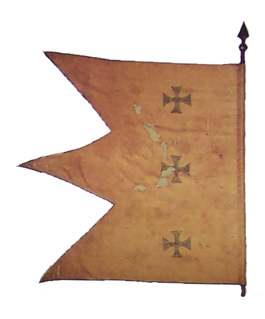 W
WStefan Gavrilović was an 18th-century-19th-century Serbian painter known best for his iconostasis and frescoes.
 W
WGerasim Georgijević or Đurđević (Ђурђевић), known as Hadži Gerasim and Hadži-Đera (Хаџи-Ђера), was a Serbian Orthodox jeromonah (priest-monk) and the hegumen of the Monastery of Moravci near Ljig. He was killed during the "Slaughter of the Knezes" in 23–29 January 1804, along with other notable Serbs, after participating in a plot against the Dahije.
 W
WHadži-Ruvim, born Rafailo Nenadović, was a Serbian Orthodox archimandrite of the Bogovađa Monastery, near Lajkovac, an artist and engraver, who was part of a plot to overthrow the Dahije, renegade Janissaries that had taken control of the Sanjak of Smederevo. He was jailed and later killed in the event known as the Slaughter of the Knezes. Hadži-Ruvim was an artist, wood carver, engraver and book collector. His most beautiful engraved cross was the one for Čokešina Monastery dating from 1799. He left notes and drawings on empty pages at the monasteries he visited. In Mionica, 92 kilometers from Belgrade, there's a church famous for the icons belonging to the Hadzi-Ruvim Art School.
 W
WVule Ilić , known as Vule Ilić Kolarac, was a Serbian military commander (vojvoda) who fought the Ottomans during the First Serbian Uprising. Vule Ilić Kolarac fought alongside Hajduk Stanoje Glavaš then under Grand Leader Karađorđe distinguishing himself at the Battle of Suvodol and at the Siege of Belgrade. During the uprising he was commander of the city of Smederevo the temporary capital of Serbia during that time.
 W
WVikentije Jovanović was the Serbian Orthodox Metropolitan of Belgrade and Karlovci from 1731 to 1737, as Vikentije II. During his diplomatic mission in Vienna in 1734, he was given permission by Emperor Charles VI to establish a hussar regiment constituted solely of Serbs and Croats. It was officially named Illyrian-Rascian regiment and inaugurated on June 16, 1735, in a grand ceremony officiated by Vikentije. The ceremony took place outside Budim where the banners which were used symbolized his importance in the Austrian Empire, but also the dual symbolism of East and West; dual coats of arms on their spears, two languages in their inscriptions, and the use of Eastern iconography and Western emblematic imagery. Vikentije's hussars went on to fight in the Austro-Russian–Turkish War (1735-1739).
 W
WĐorđe Petrović, better known by the sobriquet Black George, or Karađorđe, was a Serbian revolutionary who led the struggle for his country's independence from the Ottoman Empire during the First Serbian Uprising of 1804–1813.
 W
WVasily Nazarovich Karazin was a Russian enlightenment figure, intellectual, inventor, founder of The Ministry of National Education in Russian Empire and scientific publisher. He is the founder of the Imperial Kharkov University.
 W
WMladen Milovanović was a Serbian merchant and a voivode in the First Serbian Uprising who served as the Prime Minister of Serbia and as a first Minister of Defence.
 W
WPavle Nenadović was the Serbian Orthodox Archbishop and Metropolitan of Karlovci from 1749 to 1768.
 W
WDimitrije "Dositej" Obradović was a Serbian writer, philosopher, dramatist, librettist, translator, linguist, traveler, polyglot and the first minister of education of Serbia. An influential protagonist of the Serbian national and cultural renaissance, he advocated Enlightenment and rationalist ideas while remaining a Serbian patriot and an adherent of the Serbian Orthodox Church. Founder of modern Serbian literature, he is commonly referred to by his mononym, first name alone. He became a monk in the Serbian Orthodox monastery of Hopovo, in the Srem region, and acquired the name Dositej (Dositheus). He translated many European classics, including Aesop's Fables, into Serbian.
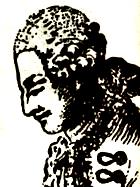 W
WZaharije Orfelin was a Serbian polymath who lived and worked in the Austrian Monarchy and Venice. Described as a Renaissance man, he was an educator, theologist, administrator, poet, engraver, lexicographer, herbalist, historian, translator, editor, publisher, polemicist, polyglot, a prominent oenologist, and traveler. His nephew is the painter Jakov Orfelin.
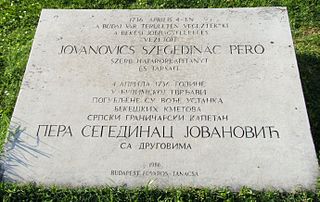 W
WPetar Jovanović, known as Pera Segedinac, was a Habsburg Serb military officer, a captain in Pomorišje. He led a Serb revolt in 1735.
 W
WMilutin Petrović was one of the vojvodas of the Serbian Revolutionary forces in the First Serbian Uprising against the Ottoman Empire, in charge of the Negotin area. His nom de guerre was Era. He and his brother Hajduk Veljko were one of the biggest heroes of the Uprising.
 W
WVeljko Petrović, known simply as Hajduk Veljko, was one of the vojvodas of the Serbian Revolutionary forces in the First Serbian Uprising against the Ottoman Empire, in charge of the Negotin area. He was one of the biggest heroes of the Uprising.
 W
WMojsije Putnik (1728–1790) was the Metropolitan of Sremski Karlovci between 1781–90, during the reign of Joseph II. He was known for publishing the Toleranzpatent meant to ensure equal rights for the Serbian Orthodox Church and the Catholic church in Sremski Karlovci.
 W
WJovan Rajić was a Serbian writer, historian, traveller, and pedagogue, considered one of the greatest Serbian academics of the 18th century. He was one of the most notable representatives of Serbian Baroque literature along with Zaharije Orfelin, Pavle Julinac, Vasilije III Petrović-Njegoš, Simeon Končarević, Simeon Piščević, and others.
 W
WRaka Levajac was a Serbian Vojvoda, a military commander of Serbian Revolutionary forces during both First Serbian Uprising and Second Serbian Uprising, the armed insurrections of the Serbian population against the Ottoman Empire. Raka Levajac was remarkably close to both uprising leaders, Obrenović and Karadjordje, before falling out of grace with each of them. A celebrated leader at a time he died in poverty after losing status and fortune.
 W
WArsenije IV Jovanović Šakabenta was the Archbishop of Peć and Serbian Patriarch from 1725 to 1737 and Head of the Serbian Orthodox Church in Habsburg Monarchy from 1737 to his death in 1748.
 W
WArsenije Sečujac was a Habsburg general who earned the rank of major general at the very end of his military career and was awarded the Knight's Cross of the Military Order of Maria Theresa, the highest Monarchy decoration, in 1762.
 W
WJovan Šević or Ivan Šević was an 18th-century military officer of Serb origin. He reached the rank of lieutenant colonel in the Serb militia forces in the Pomorišje region, then in the Military Frontier of the Habsburg Monarchy. When it became obvious that privileges granted to Serb militiamen would be reduced or completely revoked after Pomorišje and Potisje lost their frontier status, Šević left Habsburg military service in 1750 and moved to Russia. At the end of 1752, he led the second wave of colonists who migrated from Pomorišje, Potisje and Slavonia to the Russian Empire where they settled the newly established administrative region of Slavo-Serbia at the beginning of 1753. To enable him to recruit more of his fellow officers, Šević was promoted to the rank of General by the Russian Empress, Elizabeth. He commanded a Serb Hussar Regiment consisting of the colonists he brought to Russia. After Šević's death, Slavo-Serbia was disestablished, and many of his descendants became notable military officers in the Russian Imperial Army. Over time, all the Serb colonists became assimilated. Miloš Crnjanski described the migration led by Šević in his most notable work, the novel Migrations.
 W
WStefan Stratimirović was a Serbian bishop who served as the Metropolitan of Karlovci, head of the Serbian Orthodox Church in the Austrian Empire, between 1790 and 1836. Having been appointed metropolitan at the age of 33, Stratimirović maintained control over church life decisively and autonomously. He was an aid to Serbian rebel leader Karađorđe during the First Serbian Uprising and actively participated in the suppression of Tican's Rebellion in 1807. Furthermore, he published Jovan Rajić's seminal work at a most propitious occasion.
 W
WVeljko Petrović, known simply as Hajduk Veljko, was one of the vojvodas of the Serbian Revolutionary forces in the First Serbian Uprising against the Ottoman Empire, in charge of the Negotin area. He was one of the biggest heroes of the Uprising.
 W
WStevan Šupljikac, known simply as Vojvoda Šupljikac was a voivode and the first Voivode of the Serbian Vojvodina, in 1848.
 W
WPeter Tekeli (1720–1792) was a Russian general-in-chief of Serb origin. He achieved the highest rank among the Serbs who served in the Imperial Russian Army. He was born in a noble family of military tradition, whose men were officers of the Austrian army in the Military Frontier. Prior to his emigration to Russia in 1748, he fought as a young officer in the War of the Austrian Succession. Characterized by both courage and military cunning, he made a splendid career in Russia. He participated in the Seven Years' War, the first Russo-Turkish War (1768–1774), and the second Russo-Turkish War (1787–1792). Under his command, Zaporozhian Cossacks were disbanded and subjugated to the Imperial authority in 1775, without spilling a single drop of blood, for which he received the Order of St. Alexander Nevsky from Empress Catherine the Great. He retired in 1790, and died two years later in his mansion at Novomirgorod.
 W
WJovan Tekelija(c. 1660 – c. 1721–1722) was a Serb army officer serving in the Habsburg army. As commander of the Serbian Militia, Tekelija participated in many battles distinguishing himself in particular during the Battle of Zenta in 1697 where the Ottoman Empire suffered a stunning defeat. For his merit, he was appointed Captain of the Serbian militia in Arad and ennobled by Emperor Joseph I.
 W
WSava Tekelija was a merchant and among the first Serbs to have defended a doctoral thesis in jurisprudence, and in particular in legal theory and philosophy in 1786 at the University of Pest; president of the Matica srpska; philanthropist; noble; and merchant. Tekelija founded in Budapest the Tekelijanum in 1838 for Serb students studying in the city. Tekelija was a big patron of the Matica Srpska and he opened a Matica library in the Tekelijanum. He is related to Peter Tekeli and Jovan Tekelija (Thököly).
 W
WTeodor Janković Mirijevski was a Serbian, Romanian and Russian educational reformer, academic, scholar and pedagogical writer. For his accomplishments in educational reforms he was twice ennobled, by Maria Theresa in 1774 and by Catherine the Great in 1791. Among the great 18th century education reformers of Europe and Russia, Teodor Janković stands alone in that limelight. He became a member of the Russian Academy in 1783.
 W
WVisarion Pavlović was a scholar, pedagogue and the Serbian Orthodox bishop of the Eparchy of Bačka (1731–1756). He succeeded Sofronije Tomašević, and was succeeded by Mojsije Putnik.
 W
WFilip Višnjić was a Bosnian Serb epic poet and guslar. His repertoire included 13 original epic poems chronicling the First Serbian Uprising against the Ottoman Empire and four reinterpreted epics from different periods of history of Serbia.
 W
WCount Sava Lukich Vladislavich-Raguzinsky was a Serbian merchant-adventurer and diplomat in the employ of Peter the Great. He conducted important diplomatic negotiations in Constantinople, Rome and Beijing. His most lasting achievement was the Treaty of Kiakhta, which regulated relations between the Russian Empire and the Qing Empire until the mid-19th century. Also, he was an author of a whole number of pamphlets, monographs, treaties and letters concerned with liberating the lands of the Slavs, then occupied by the Ottoman Empire and the forces of Leopold I.
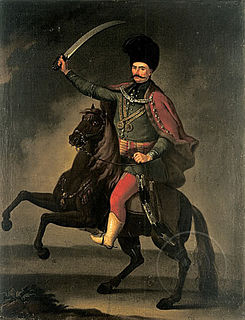 W
WBogić Vučković Stratimirović was a rebel leader in the Sanjak of Herzegovina who organized an uprising in 1737, during the Austro-Russian–Turkish War (1735–39). He was from the Trebinje hinterland, in Herzegovina, the son of Vučko Petrović and grandson of Petar Stratimirović. Early on, he moved to the Kingdom of Serbia (1718–39). He is mentioned in documents as a merchant from Kragujevac. He bought an attestation from the Republic of Ragusa that he descended from Stracimir Balšić, the Lord of Zeta, then appeared in autumn 1737 at the Habsburg deputy commander's office in Sremski Karlovci, with Aleksa Milišević, presenting themselves as nobility and Vučković stressed that he had readied the Montenegrin peoples to help the Austrian Emperor. Vučković and his brothers organized an uprising in Herzegovina in 1737 during Austrian-Turkish conflicts in the Balkans, at the same time helping the Austrians. After the Capture of Belgrade (1739), for their efforts, he and his brothers were awarded Austrian noble titles and granted the village of Kulpin which they settled. They adopted the coat of arms of the medieval Kosača.
 W
WJoakim Vujić was a Serbian writer, dramatist, actor, traveler and polyglot. He was one of the most accomplished Serbian dramatists and writers of the 18th century, director of Knjaževsko-srpski teatar in Kragujevac 1835/36. He is known as the Father of Serbian Theatre.
 W
WStefano Zannowich (Serbian: Стефан Зановић/Stefan or Stjepan Zanović,, called Hanibal, was a Montenegrin Serb count, adventurer and writer of "Turkish Letters". He wrote in Italian, French, Latin, German, and Serbian. He was a pen pal of Gluck, Pietro Metastasio, Voltaire, Jean le Rond d'Alembert, Jean Jacques Rousseau, Catherine the Great, and Frederick William II of Prussia, to whom he dedicated a book of French verses translated from Italian, "L'Alcoran des Princes Destinés au Trone". Giacomo Casanova mentions Stefano Zannovich, who "paid a visit to Vienna under the alias of Prince Castriotto d'Albanie. Under pressure of the authorities, he left at the end of July 1784" for Poland and later for the Netherlands.
 W
WHristofor Žefarović was an 18th-century painter, engraver, writer and poet and a notable proponent of early pan-South Slavism.
 W
WGerasim Zelić was a Serbian Orthodox Church archimandrite, traveller and writer. His chief work is Žitije (Lives), in three volumes. They are memoirs of his travels throughout western Europe, Russia and Asia Minor from the latter half of the 18th century to the first decade of the 19th century and the famous personalities he encountered. He left behind invaluable original notes on the people, religions, manners, customs, and trade of his era.
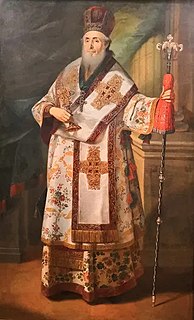 W
WKiril Živković also spelled Kiril Zhivkovich was a writer and Orthodox bishop.
 W
WSemyon Zorich (1743–1799) was an Imperial Russian lieutenant-general and count of the Holy Roman Empire, born in Serbia, who served Imperial Russia against the Prussians and Turks. A member of the Russian court, he was presented to Empress Catherine the Great by Grigory Potemkin and, after having been tested by Praskovja Bruce and doctor Rogerson, became the Empress' lover. He was most influential in the commercial development of Shklov and Mogilev.